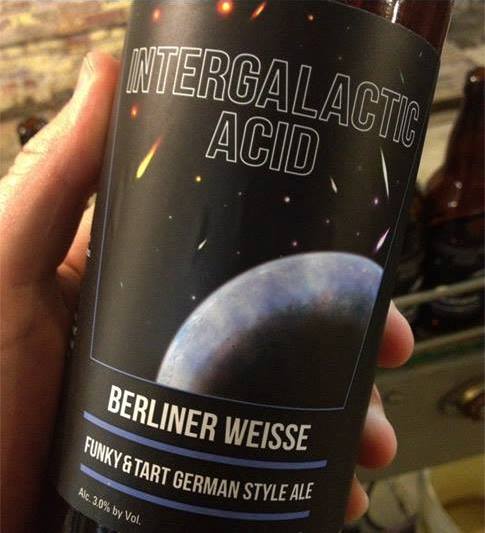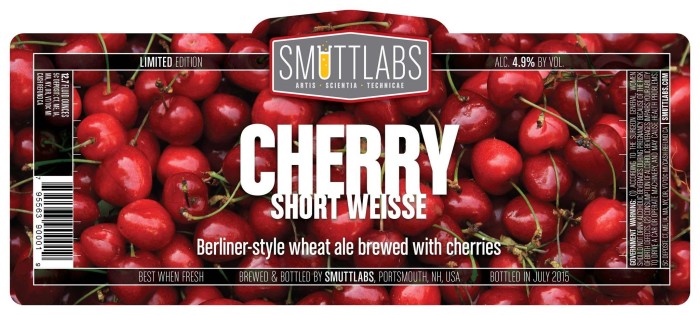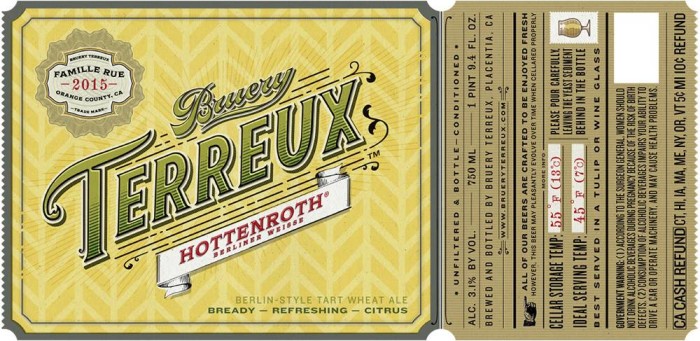Get To Know Berliner Weisse, The Original Session Beer
Never mind the name — the Berliner Weisse style of beer most likely originated in Hamburg, 180 miles northwest of the German capital with which it eventually became associated.
It was in Hamburg sometime in the 17th century that brewers began, unwittingly or not, introducing lactic-acid bacteria into a beer they were making with the copious amounts of wheat available in north-central Europe. The bacteria, which brewers would normally try carefully to avoid, gave Berliner Weisse [pronounced ber-LEAN-er vise-AH] a distinctive acidic bite.
Ale yeast was — and is — used for fermentation, and hops have traditionally been added solely as a preservative. That is because bitterness is not a hallmark of the style. Nor is strength, with many Berliner Weisse clocking in at less than 5 percent alcohol by volume. Nor is a heavy taste or mouthfeel, with the wheat-driven lightness of body a defining characteristic instead.
"It is the most quenching and refreshing of all beers," the late, great beer critic Michael Jackson wrote in his World Guide to Beer. Jackson noted that its thin effervescence led Napoleon Bonaparte's invading troops to declare Berliner Weisse the "Champagne of the North" in the early 19th century. By the end of that century, it was one of the more popular beer styles in Germany.
To American palates, Berliner Weisse may not then seem all that mouthwatering: thin with little head, tart from the acidity and with minuscule kick, either from alcohol or hops. A double IPA this ain't. Berliner Weisse is more akin to its fellow German-born sour style, gose.
Though, unlike gose today, it seems unlikely to enjoy a kind of voguish renaissance. Gose has a couple of freaky hooks — its salty taste and vegetal aroma — to hang an angle on. Berliner Weisse is just light-tasting, low-alcohol beer that might taste sour to some.
Or so it would seem. That thinness can be refreshing, the tartness from the acidity a nice break from Americanized hop bombs, and the lower alcohol levels insurance against a nasty hangover. It is an eminently sippable style.
In short, Berliner Weisse is ready for its own moment as the original session beer.
A final note: Drinking Berliner Weisse, if you really want to dive deep into it, can be especially fun. It is traditionally drunk through a straw from bowl-shaped glasses, with syrup, especially sour-apple- and raspberry-flavored, sometimes added to cut the tartness — and to leave delightfully bright colors behind. See? Fun!
Here are six American-made Berliner Weisse to ease your way into this woefully neglected style:
Intergalactic Acid Berliner Weisse
The Tap Brewing Co., Haverhill, Massachusetts
"Berliner Weisse" means "Berlin White" in English, and while in beerland white generally means wheat, in this case it also describes the cloudy color of Berliner Weisse not dosed with fruit — such as this offering from tiny Tap Brewing in Massachusetts. The acidity certainly cuts delightfully through, as does a bone-dry, lemony taste. As to be expected, there is little bitterness and only 3 percent ABV. A wonderful introduction to the style.
Blueberry Berliner Weisse
White Birch Brewing, Hooksett, New Hampshire
An earthy blueberry aroma jumps out from this Berliner Weisse, and for good reason: White Birch ferments it on blueberry puree. No need to add syrup, then. This is a fairly strong version of the style — 5.5 percent ABV — but otherwise it hits the tart/thin benchmarks.
Cherry Short Weisse
SmuttLabs (a part of the Smuttynose Brewing Co.), Portsmouth, New Hampshire
Another Berliner Weisse with fruit added during fermentation — in this case, cherries — and with a higher alcohol presence (5.2 percent ABV). It pours a ruby-orange and reeks pleasantly of the fruit throughout. Exceedingly light and dry — solid.
The Eleventh Labor
Schlafly Beer, St. Louis, Missouri
This one was made with apricot puree added before fermentation, and that fruity taste definitely comes roaring through, starting with the aroma. Particularly tart, it's 4.2 percent ABV. (The name, by the way, comes from the mythological story of Hercules having to steal golden apples from deific kingpin Zeus.)
Hottenroth Berliner Weisse
Bruery Terreux, Placentia, California
A sharp, lemony taste pervades this Berliner Weisse from Orange County, which tasted smoother than others on this list. It starts dry and finishes righteously tart, the tartness lingering for a long while. Just over 3 percent ABV, a near-perfect take on the style.
James Beer
Evil Twin Brewing (brewed under contract at the Westbrook Brewing Co. in Mt. Pleasant, South Carolina)
Mouth-puckeringly sour — the sourest of the bunch, in fact — this Berliner Weisse comes with strawberries and nicoise olives added (yup). As odd, and perhaps off-putting, as it may seem, the additions provided a salty backbone to the taste and left us wondering about the potential of this esoteric style in the skilled hands of America's brewers. Three and a half percent ABV. Go for it.
Tom Acitelli is the author of The Audacity of Hops: The History of America's Craft Beer Revolution and the new fine-wine history, American Wine: A Coming-of-Age Story.




